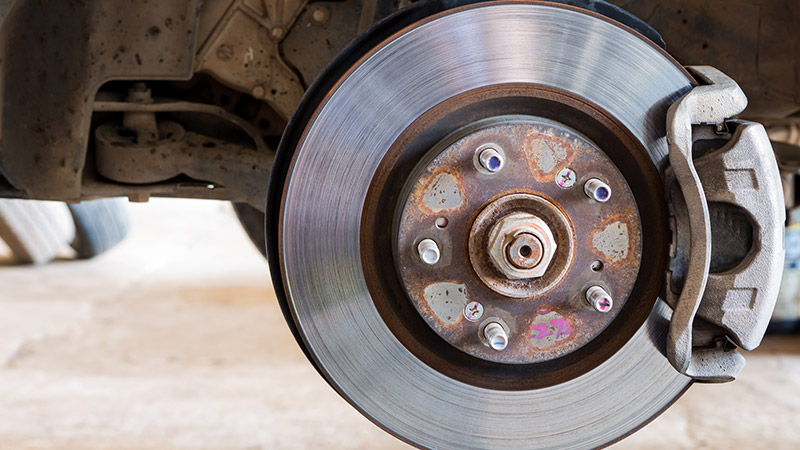Brake Rotors Service
 Understanding Brake Rotors and Why They Matter
Understanding Brake Rotors and Why They Matter
Your vehicle’s braking system is one of its most critical safety features—and at the center of that system are the brake rotors. While brake pads often get the attention, the rotors play an equally important role in stopping your car smoothly and safely. Knowing how they work, the different types available, and when to replace them can make all the difference in your vehicle’s performance and safety.
What Are Brake Rotors?
Brake rotors, also known as brake discs, are the round metal discs attached to each wheel hub. When you press the brake pedal, the brake pads clamp down on the rotors, creating friction that slows the wheel’s rotation. The friction between the pads and rotors converts kinetic energy into heat, bringing your vehicle to a controlled stop.
Over time, rotors experience wear from heat, pressure, and friction. Warped or uneven rotors can lead to vibrations, squealing noises, or reduced braking efficiency—signs that it may be time for inspection or replacement.
Types of Brake Rotors
Not all rotors are the same. The design and material of your rotors can impact performance, cooling, and longevity. Common types include:
-
Solid Rotors
Simple and reliable, solid rotors are typically found on smaller cars and rear brake systems. They provide consistent braking for everyday driving. -
Vented Rotors
Designed with internal vanes or passages, vented rotors help dissipate heat more efficiently, reducing the risk of brake fade during heavy braking. Most modern vehicles use vented rotors on the front wheels. -
Slotted Rotors
These rotors feature grooves cut into the surface to improve brake pad contact, reduce dust buildup, and enhance performance—ideal for performance or off-road driving. -
Drilled Rotors
Drilled rotors have precision holes that allow heat, gas, and moisture to escape. They provide excellent cooling and performance in wet conditions but may wear faster under extreme use. -
Drilled and Slotted Rotors
Combining both designs, these rotors deliver superior cooling and friction management, often used in high-performance or towing applications.
Benefits of Quality Rotors
-
Improved Safety: High-quality rotors ensure consistent braking performance and shorter stopping distances.
-
Heat Management: Performance rotors reduce brake fade caused by heat buildup.
-
Smooth Operation: Well-maintained rotors provide even, quiet braking with less vibration.
-
Longevity: Durable materials and precision engineering help extend both rotor and pad life.
When to Replace Your Rotors
Most rotors last between 50,000 and 70,000 miles, but driving conditions, brake pad type, and driving habits can affect their lifespan. Common signs of rotor wear include:
-
Pulsation or vibration when braking
-
Squealing or scraping noises
-
Visible scoring, cracks, or discoloration
If you notice any of these symptoms, have your brake system inspected by a professional.
Warping usually results from excessive heat or uneven torque when tightening wheel lug nuts. Driving habits, such as frequent hard braking or towing heavy loads, can also cause uneven rotor wear.
If you do a lot of high-speed, towing, or performance driving, drilled or slotted rotors can provide better cooling and more consistent braking. For regular daily driving, vented rotors are usually sufficient.
Other Services:
Towns Serviced:
Mundelein, IL
Vernon Hills, IL
Green Oaks, IL
Mettawa, IL
Knollwood, IL
Grayslake, IL
Gurnee, IL
Lake Forest, IL
North Chicago, IL
Waukegan, IL
Makes Serviced:
Toyota
Volkswagen
Hyundai
Ford
Honda
Nissan
Kia
Chevrolet
General Motors
Stellantis
BMW
Mercedes-Benz
Subaru
Jeep
Tesla
Mazda
Volvo
Audi
Lexus
